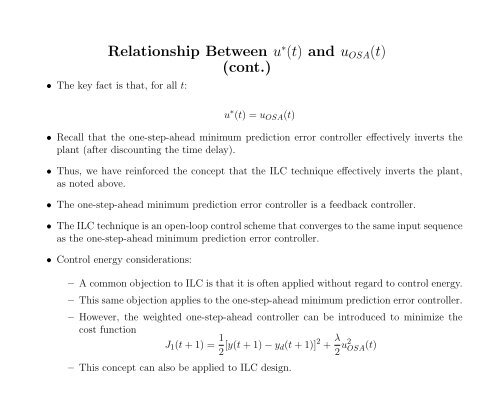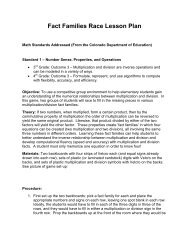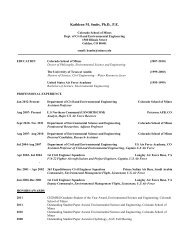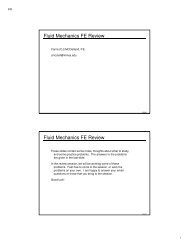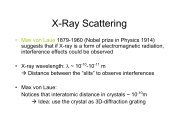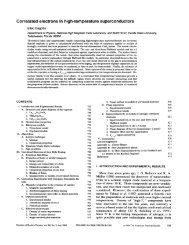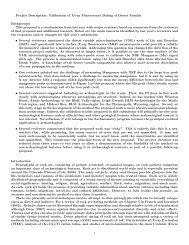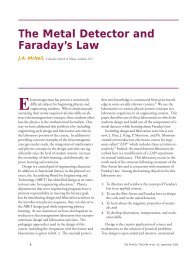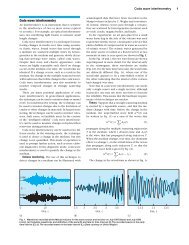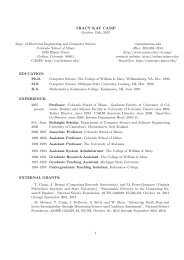An Introduction to Iterative Learning Control - Inside Mines
An Introduction to Iterative Learning Control - Inside Mines
An Introduction to Iterative Learning Control - Inside Mines
Create successful ePaper yourself
Turn your PDF publications into a flip-book with our unique Google optimized e-Paper software.
Relationship Between u ∗ (t) and uOSA(t)<br />
(cont.)<br />
• The key fact is that, for all t:<br />
u ∗ (t) = uOSA(t)<br />
• Recall that the one-step-ahead minimum prediction error controller effectively inverts the<br />
plant (after discounting the time delay).<br />
• Thus, we have reinforced the concept that the ILC technique effectively inverts the plant,<br />
as noted above.<br />
• The one-step-ahead minimum prediction error controller is a feedback controller.<br />
• The ILC technique is an open-loop control scheme that converges <strong>to</strong> the same input sequence<br />
as the one-step-ahead minimum prediction error controller.<br />
• <strong>Control</strong> energy considerations:<br />
– A common objection <strong>to</strong> ILC is that it is often applied without regard <strong>to</strong> control energy.<br />
– This same objection applies <strong>to</strong> the one-step-ahead minimum prediction error controller.<br />
– However, the weighted one-step-ahead controller can be introduced <strong>to</strong> minimize the<br />
cost function<br />
J1(t + 1) = 1<br />
2 [y(t + 1) − yd(t + 1)] 2 + λ<br />
2 u2 OSA (t)<br />
– This concept can also be applied <strong>to</strong> ILC design.


